Pentax Optio W30 Review
Pentax Optio W30
The latest waterproof Pentax gets a day out at sea.
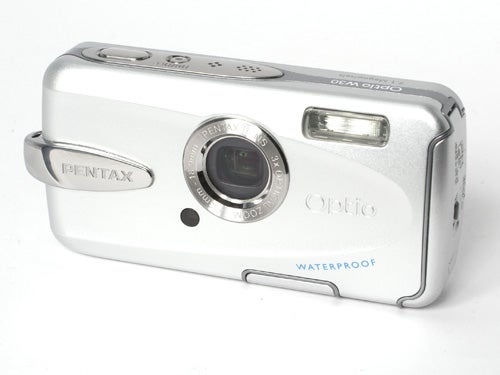
Verdict
Key Specifications
- Review Price: £164.00
Over the past few years I’ve reviewed all of Pentax’s Optio W-series of waterproof compact cameras, most recently the Optio W20 in January this year. Usually Pentax send me these cameras in the middle of winter, and as a result I have to risk life, limb and frostbite to test their waterproof abilities. For the launch of the new Optio W30 however Pentax invited me along on a special event where I could test the camera is in complete safety. Along with a small group of other camera journalists, I was invited along to the RNLI Training College in Poole, Dorset, where we met some of the brave volunteers who man Britain’s lifeboats, and went out to sea on the latest £2.5-million Tamar-class lifeboat. The RNLI issues Pentax waterproof cameras to its crews to record many of their activities, which is an impressive testament to the ruggedness and durability of the camera. Having spent the afternoon crashing through some fairly choppy seas at 25 knots, getting soaked by sea spray and battered around by the waves, I have a whole new respect and admiration for the RNLI crews who volunteer to risk their lives in conditions far, far worse, an average of 22 times a day. I’m also pretty impressed with the W30. In conditions that would have destroyed almost any other camera on the market, I was able to take some fairly decent pictures.

The Optio W30 is very similar to its predecessor the W20 in many ways, not least in its price. The W30 is currently available for around £164, which is only about £10 more than the current list price for the W20. It has the same 7.1-megapixel resolution, the same 115k-pixel 2.5-in LCD monitor (although now with an anti-glare coating), and the same internal 3x zoom lens. It even bears a strong physical resemblance to the W20 although it is actually a couple of millimetres bigger and about five grams heavier. Having used the camera for a week now I find that I actually preferred the body design of the W20. It had a flared shape to the right-hand end of the case that was a lot easier to hold securely. The W30 has a quite a slippery shape by comparison, and is harder to grip. The raised feature on the front and the token thumbgrip area on the back don’t really help much.
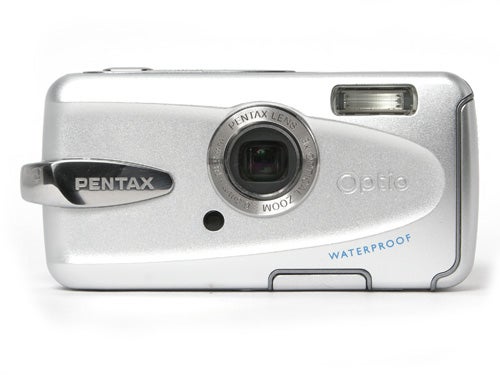
The control layout is also very similar to the W20, with only one button in a different location. Some of the buttons are slightly larger, but still not big enough to operate while wearing gloves. The shape of the zoom control is slightly different, but works in exactly the same way.
However there are a number of crucial differences which make the W30 a more interesting camera than the W20. For a start, thanks to new stronger seals around the controls and hatches it is waterproof to a depth of three metres for up to two hours, twice the depth and four times the duration of the W20. This is still less than the five metre depth rating of the W30’s only real rival the Olympus mju 725 SW, but is more than enough for most seaside snorkelling and watersports activities.
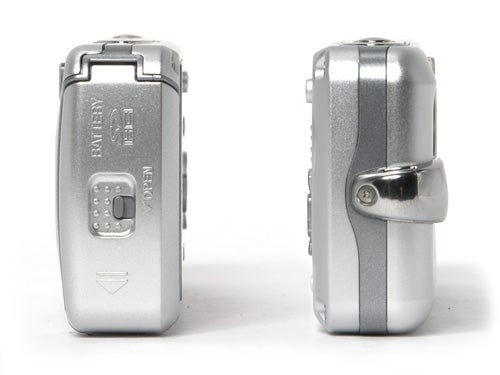
Another change from the W20 is an additional sensitivity setting, taking the maximum up to 3200 ISO. Along with this is the slightly misleading Digital Shake Reduction, a feature which the uninitiated might mistake for a proper mechanical image stabilisation system, such as the very effective system on some of Pentax’s digital SLRs. In fact the DSR mode just boosts the ISO setting to produce faster shutter speeds, which does help to reduce motion blur but incurs the risk of increased image noise. As far as I’m aware the W30 uses exactly the same sensor as the W20 and several more of Pentax’s 7MP compacts, so the increased sensitivity is simply a tweak to the image processing engine. The new model’s image noise performance appears to be the same as the W20, in other words not bad up to 400 ISO but progressively worse at higher settings. 1600 ISO was pretty noisy on the previous model, and proves to be the same for the W30, so as you can imagine the 3200 ISO setting is even noisier and produces extremely poor image quality. Since the Digital Shake Reduction mode can push the automatic ISO setting up to this useless maximum in low light conditions, you need to pay attention to what it’s doing or you’ll have some very disappointing pictures.
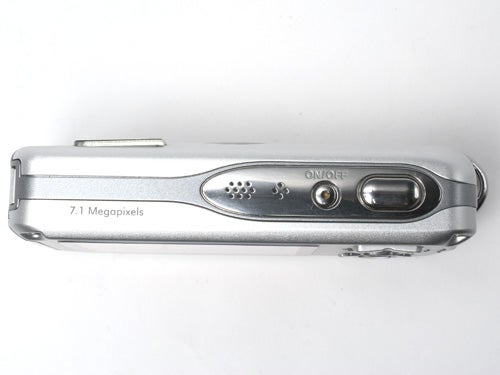
Another addition is the now almost ubiquitous face detection system in portrait mode, which automatically detects human faces, focuses on them and sets the exposure accordingly. As I’ve mentioned before I don’t consider this to be an especially useful feature, but since it seems to have become standard equipment on even budget-priced digital cameras I’m not going to complain about it.
The W30 has similar features to the Optio M30 that I reviewed last month. It has 21 scene modes, as well as Program auto and the very useful Auto Picture mode, which automatically selects the appropriate scene mode depending on the type of picture being taken. There are several useful features in playback mode, including automatic red-eye correction, cropping and resizing, voice memo, frame composites and the usual range of colour filters. Additionally it has two underwater modes, one for still images and the other for movies. The movie mode shoots at VGA resolution and 30fps.
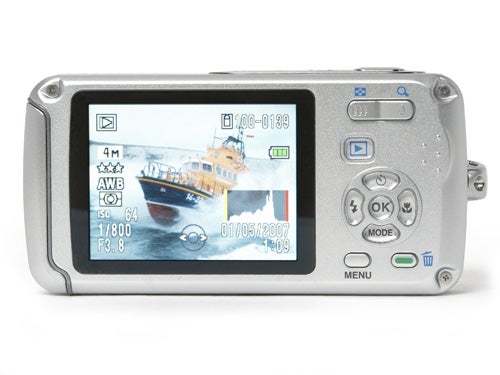
In terms of general performance the W30 is about average for a pocket compact. It starts up in about two and a half seconds, and in single-shot mode it has a shot-to-shot time of also about two and a half seconds. It has two continuous shooting modes; a high speed burst mode that can take five shots in two seconds, and an unlimited mode that averages one shot every 1.2 seconds, both of which are quite respectable if not outstanding results. The AF system is reasonably quick in good light, although it does slow down a bit in lower light conditions; however its low-light focusing accuracy is very good indeed, locking on to subjects in near darkness despite the lack of an AF assist lamp. Battery performance seems to be noticeably improved over previous models, not least because of the new 740mAh battery, which is slightly stronger than the one in the W20.
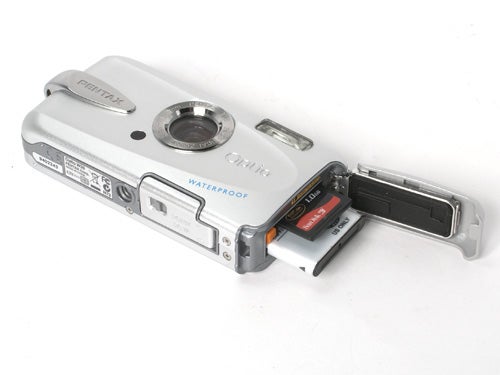
Picture quality is about average for a 7MP compact. Exposure is generally good, although in standard multi-zone metering mode it does tend to under-expose in strong backlighting. Colour rendition is very good, and the lens performs well despite its unusual configuration. It has noticeable barrel distortion at the wide-angle end of the zoom range, but overall detail and corner sharpness are a match for any other 7MP pocket compact. As I’ve already mentioned, the W30 does suffer from quite bad image noise at high ISO settings, but as long as you keep it under 800 it isn’t a major problem.
”’Verdict”’
An improvement over the far-from-shabby W20, the Pentax Optio W30 is an ideal holiday camera, able to survive water, sand, dust and even small children. A well-made and stylish camera, it is as easy to use as any pocket compact and can take a pretty decent picture almost anywhere. Its low-light performance is especially impressive.
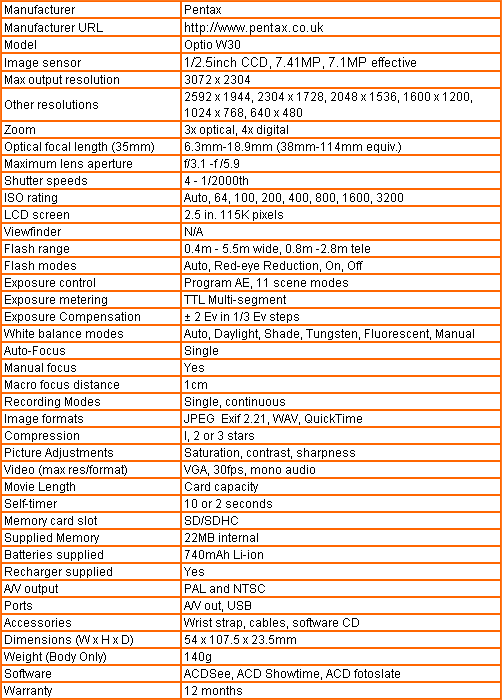
”A range of test shots are shown over the next few pages. Here, the full size image at the minimum ISO setting has been reduced for bandwidth purposes to let you see the full image, and a series of crops taken from original full resolution images at a range of ISO settings have been placed below it in order for you to gain an appreciation of the overall quality.”
—-

—-
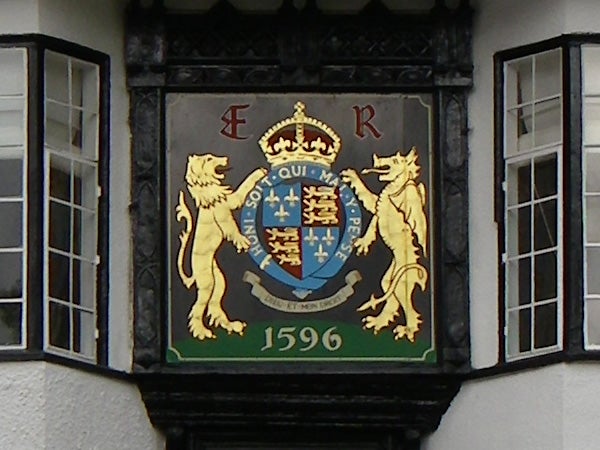
At the minimum ISO setting of 64 the image is nice and clean, with good colour rendition.
—-

Likewise at ISO 100.
—-

Still no problems at ISO 200.
—-

At 400 ISO there is some light noise, with random colour speckling in the darker areas.
—-
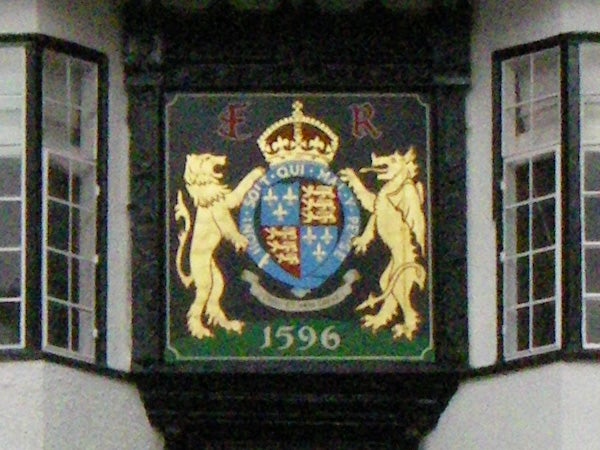
At 800 ISO the noise is much worse, and visible over the entire frame, but there is still some fine detail.
—-

At 1600 ISO the noise is now quite bad, most fine detail is lost and the colour balance is distorted.
—-

At 3200 ISO this shot is over-exposed by about one stop, but even correctly exposed the the image quality is very poor at this speed. The DSP mode will automatically choose this setting in low light conditions, so beware.
—-
”A range of test shots are shown over the next two pages. Here, the full size image has been reduced for bandwidth purposes, and in some case a crop taken from the original full resolution image has been placed below it in order for you to gain an appreciation of the overall quality.”
—-
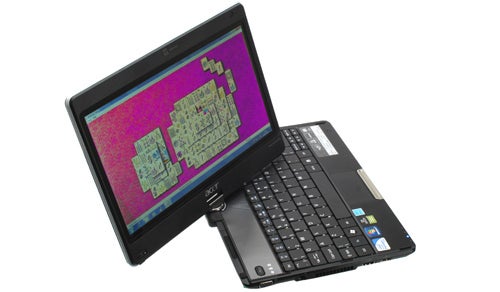
Here’s my usual test shot for detail comparison. Click for the full-size image or see below for a full-res crop.
—-

Thanks to the excellent Pentax lens the level of detail is very good, toward the high end for 7MP cameras.
—-
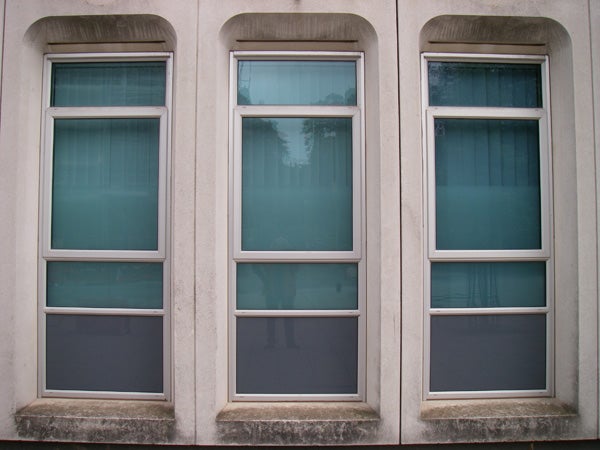
The lens does produce quite a bit of spherical distortion at the wide-angle end, the price it pays for its unique non-protruding design.
—-

The wide-angle end is equivalent to 38mm, not particularly wide at all.
—-

The telephoto end is equivalent to 114mm.
—-
”A range of test shots are shown over the next two pages. Here, the full size image has been reduced for bandwidth purposes, and in some case a crop taken from the original full resolution image has been placed below it in order for you to gain an appreciation of the overall quality.”
—-
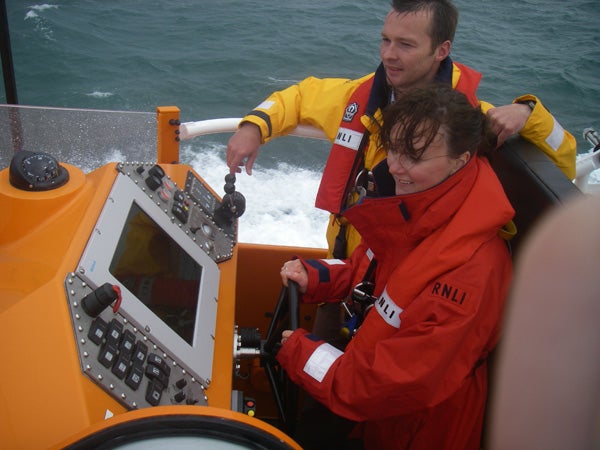
Amazingly, the RNLI crew let a bunch of photography hacks take turns driving their brand-new £2.5million super-boat. Mind you, I doubt we could have damaged it, the thing is built like a tank.
—-
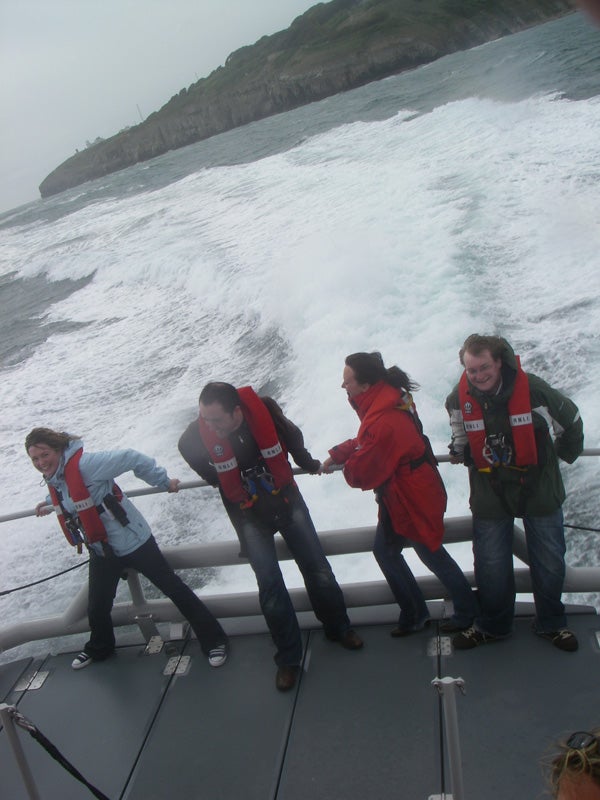
I bet you wish you’d worn that waterproof they offered you now, don’t you? Hehehe.
—-
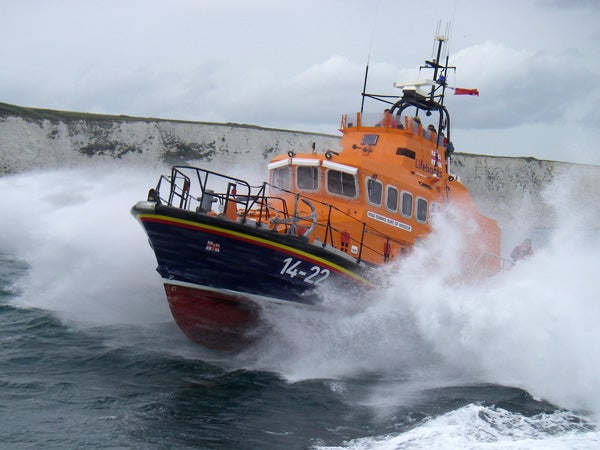
The boat we were on was travelling at about the same speed as this one, pitching up and down on the waves, and throwing up just as much spray. I managed to get this shot and many more one-handed, while hanging on for dear life with my other hand. Any camera that can produce a shot this good under those circumstances is clearly doing something right.
—-
Finally, many thanks to the staff of the RNLI Training College, Poole, for a memorable day out. The RNLI has saved over 137,000 lives since 1824, is staffed largely by volunteers, and is funded entirely by charity. Support your local lifeboat, and make a donation today!
—-
Trusted Score
Score in detail
-
Value 8
-
Image Quality 7
Features
| Camera type | Digital Compact |
| Megapixels (Megapixel) | 7.1 Megapixel |
| Optical Zoom (Times) | 3x |
| Image Sensor | CCD |
| Image Stabilisation | Electronic |
| LCD Monitor | 2.5 in |
| Flash modes | Auto Flash, Red-eye Reduction, Flash ON, Flash OFF |
| Video (max res/format) | 640 x 480 |
| Memory card slot | Secure Digital (SD) Card |

